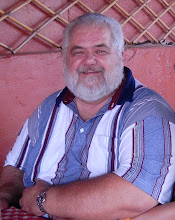It seems that there has been a lot of press recently on dengue fever and dengue hemorrhagic fever , so I will add my two cents. While I in no way claim to be a medical expert or have a scientific background, I do feel confident in giving my opinions. I had dengue fever while serving in the Peace Corps and had to be medically evacuated from Ubon Rachathani to Bangkok. Years have allowed me to forget being sick in the first place or what the symptoms were. I do not remember who took me to the doctor, or who notified the Peace Corps Office in Bangkok. I don’t remember going to the Air Force Base or getting on the plane. There are only faint recollections of the trip to Bangkok, but I still have memories of the horrible headache and my aching limbs.
I was taken to the Seventh Day Adventist Hospital in Bangkok and admitted for several days. As it happens, this turned out to be the first of three stays at this particular hospital during my two year Peace Corps stay in Thailand. (The two other trips were when my motor scooter landed on top of me one morning and then when I had to be given a series of rabies shots. Both are stories for later.) At the hospital I was given excellent care and was soon recovered enough to rest at a hostel where our Peace Corps group had stayed when we first came to Thailand. I do not remember the exact number of days but it was only a short time until I was feeling fine and back up country. The doctors told me that I had the Break-bone type of dengue fever (at that time I had never heard of dengue hemorrhagic fever). For this I was lucky, in that now, they felt I was immune to the other types of dengue fever. I don’t know that this is still the current thinking about dengue fever but at that time it seemed to be the case.
Dengue fever is a flu-like illness that can affect persons of any age but seldom causes death. Dengue fever is a disease caused by a family of four distinct viruses which are all transmitted by mosquitoes. According to the World Health Organization on its internet site, “Recovery from infection by one [of the viruses] provides lifelong immunity against that virus but confers only partial and transient protection against subsequent infection by the other three viruses. “ Where do you find dengue fever? Again, according to the World Health Organization, it is endemic in over 100 countries of Africa, The Americans, the Eastern Mediterranean, South-East Asia and the Western Pacific. Outbreaks of dengue fever are prevalent in the tropics and subtropics regions, and have occurred in Puerto Rico, the U.S. Virgin Islands, Cuba and Central America. Newer cases have been documented in Northern Mexico and in Texas.
Dengue fever is not contagious and cannot be spread from human to human without the mosquito. Infected mosquitoes bite a healthy human who comes down with dengue fever. While the human is suffering from the disease other healthy mosquitoes bite the human and become infected and in turn bite other healthy persons. It has been reported that only the female Aedes mosquito is the carrier of this disease. Dengue fever is more prevalent during the rainy season of Thailand when the mosquito flourishes but any water filled area can serve as a breeding ground for mosquitoes year round.
After being bitten by an infected mosquito, the incubation period in humans is usually 4 to 7 days but can be anywhere from 3 to 15 days before the symptoms of the disease appear. Symptoms may include the following:
1) Severe headache (usually in the forehead)
2) Chills and then high fever
3) Pain behind the eyes
4) Joint and muscle pain
5) Nausea and vomiting
6) Rash
The fever and other symptoms will last a couple of days before the temperature drops quite rapidly. This is usually followed by a day of feeling good and then the fever and symptoms return for a few more days. Many times the rash will appear several days after the first high fever begins and will subside after a day or two. A few days later a second rash may appear.
There is no vaccine for dengue fever and since dengue fever is a virus there is no specific medication for it. Usually rest, drinking lots of fluids, and the use of pain relievers such as Tylenol are the only things needed. Within two weeks most people are weak but recovered. It may take several weeks to get back to feeling like your old self. The CDC advises that aspirin should not be taken.
Dengue hemorrhagic fever is usually confined to children and is known by several other names including: Thai, Philippine, and Southeast Asian hemorrhagic fever. More symptoms that might be present are abdominal pain, cough, sore throat, with respiratory and intestinal symptoms. Many times symptoms of bleeding will also be present. Patients with this need to seek medical assistance and be monitored to make sure they do not go into shock.
While dengue fever is rarely fatal, it is not something you wish to get while traveling in areas where it is present. There are a few very simple preventive suggestions for not contacting the disease.
· Since the Aedes mosquito is a mosquito that only bites during the daylight, take precautions during the early morning hours before daybreak and in the late afternoon before dark.
· Wear long pants and shirts with long sleeves, socks and shoes.
· Use a mosquito repellent with DEET.
· In areas that are having an outbreak of dengue fever, or in the rainy season, stay indoors in air-conditioned areas as much as possible.




